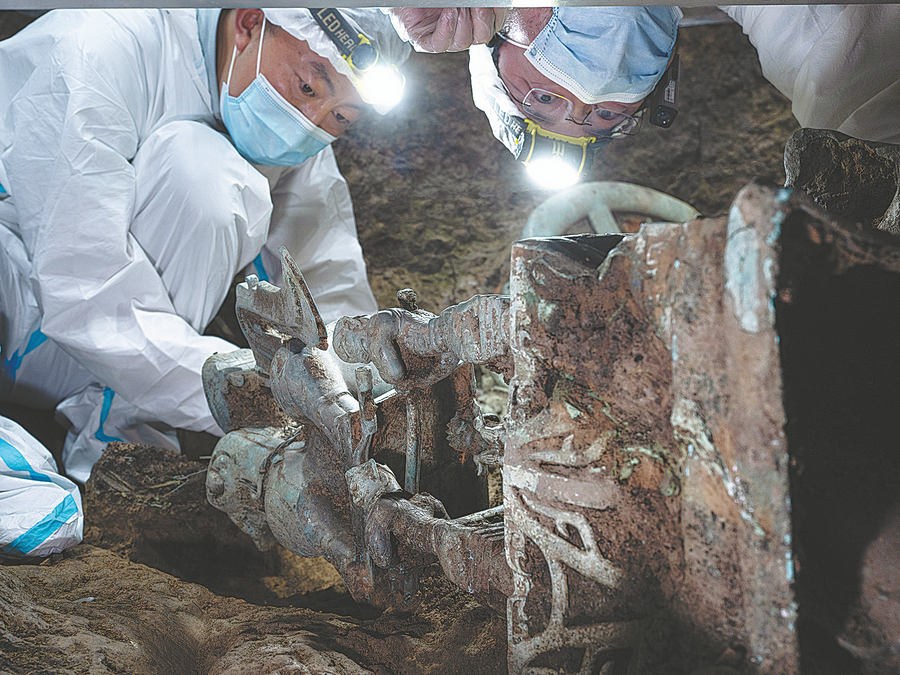

Researchers said the altar provides clues to religious conceptions, political tenets, architectural styles and other elements of ancient Shu culture. It is invaluable in helping explore the Shu people's world, the inner core of primitive religion, and the system used to build ancestral temples in the area.
Carbon dating on nearly 200 relics from the six new pits at the Sanxingdui site show that they date from 1131 to 1012 BC during the late period of the Shang Dynasty (16th to 11th centuries BC).
Lei Xingshan, a professor of history at Capital Normal University in Beijing, said the age of the pits was disputed for more than three decades, and carbon dating was not used in earlier excavations because not enough relics were available for the purpose.
Archaeologists believe that all eight pits were used for sacrificial purposes. As many of the artifacts from No 1 and No 2 pits displayed at the Sanxingdui Museum resemble bronze human faces with protruding eyes, there has been speculation that they are the work of aliens.